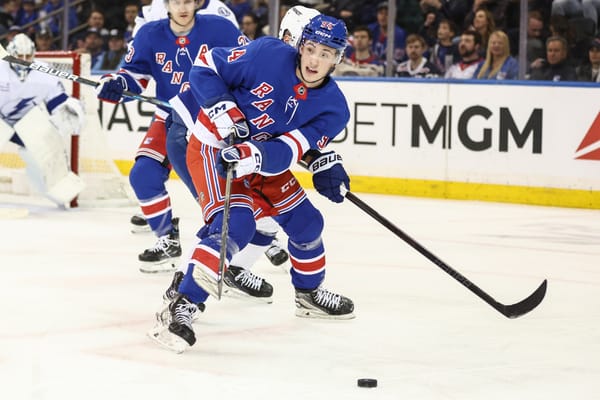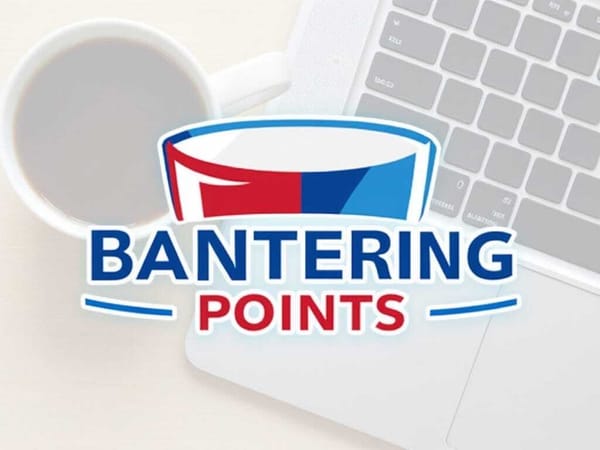Ranking the Rangers Trade Assets: Part 3
I was waiting to publish this article until after the draft because I was expecting at least one major trade piece to be moved from the Rangers. But with little movement during the draft, the Rangers still retain most of their likely trading chips. Now in Part 3 of our series, I’ll be taking a look at the three Rangers who are the most likely to be moved by the time the season starts
Tier 3: Likely to move and less value
Zuccarello, Spooner, Namestnikov
I’ll start with none other than Mats Zuccarello, who is probably the Rangers biggest trade chip since Ryan McDonagh and J.T. Miller were dealt. Tom already went into great detail about Zuccarello’s trade value, so I’ll summarize a few of his key points and add a little bit of my own thoughts.
Zuccarello still has some good years left in him at 31-years-old and his $4.5 million cap hit is extremely reasonable for a player of his caliber. Even though he is not in his prime anymore, age should not be that much of a concern for next season. He has played fewer NHL games than most players, as he didn’t become a regular in the NHL until he was 26. He has been (at the very least) a top 50 scorer over the last three years and has recorded 173 points over his last 241 games. Zuccarello is arguably the most talented player the Rangers are actively looking to move and he can instantly bolster any team’s top-six.
Vladislav Namestnikov was brought over to the Rangers in the Ryan McDonagh trade with the Tampa Bay Lightning and isn’t likely to stick around for the whole Rangers rebuild. The 25-year-old forward started out hot with Tampa (scoring 44 points in 62 games) but went ice cold as soon as he became a Blueshirt. He was one of the lowest scoring Rangers in the final few weeks of the season, only tallying four points through 19 games and outscoring defenseman Rob O’Gara by only one point. Namestnikov’s not a bad player but his disappointing play with the Rangers provided plenty of evidence that he couldn’t produce away from Steven Stamkos. As not as a reliable scorer as Zuccarello, Namestnikov won’t bring back as much in any trade, especially after his poor start with the Rangers.
Finally we have Ryan Spooner, who was acquired in the Rick Nash trade at the deadline. Jack gave a great writeup about why the Rangers can’t fall in love with Spooner and it’d be in the team’s best interest to try and trade him for future assets. Spooner’s a very good supporting offensive player and put his offensive skills on full display when he tallied 16 points in the Rangers final 20 games (tied for the most by any Ranger skater over that time). However, the Rangers don’t need to be making long-term commitments to supporting players, especially when they are now flushed with prospects who’ll need that ice time in to develop in the near future. Spooner fits best on a team that could use him offensive talents in a secondary scoring role to compete in the postseason, something the Rangers absolutely don’t need. His run with New York late in the season only helped his trade value yet, like Namestnikov, the Rangers can’t be expecting a lot for him in return. He was basically just a throw-in in the Nash trade so the Bruins could make the salary work, and Boston had already been rumored to be looking to move Spooner for a long time. That and his underlying numbers haven’t been that great throughout his career.
For the most part, we know that the Rangers are looking to move any one of these three players, especially as opposed to moving a player such as Kevin Hayes or Chris Kreider. Zuccarello is too old to fit in the Rangers timeline and Spooner and Namestnikov don’t have the high-end upside that can help the Rangers when they’re looking to compete. Instead of committing a lot of term and dollars to them now, the Rangers should be hoping that their production can easily be replaced by some of their upcoming prospects for a fraction of the cost. The best way to utilize those two players to further the rebuild is to just trade them for assets that can help them more in the future.
The problem is though, that if the Rangers really wanted to move them, the best time would have arguably been at the draft, where most of the trades go down during the offseason. Ideally the Rangers would have been able to trade all three of them, recouping as many assets as possible and not having to worry about signing Spooner and Namestnikov to new extensions. But with no major moves occurring at the draft, the Rangers have pretty much two options.
There is still the possibility that the Rangers make a trade before the season starts, and I think that will happen for one at least one of the three listed players. There were several reports that John Tavares and Ilya Kovalchuk were holding up talks at the draft, with teams that were interested in the two free agents not willing to acquire more salary while still chasing the bigger fish available. With Kovalchuk signed and Tavares due to be off the market by July 1st, the teams who missed out may be more inclined to close a deal for one of Zuccarello, Spooner, or Namestnikov. Trading one of them before the season starts also frees up more money for the Rangers to get creative, either by signing free agents that they can flip at the deadline or by taking on bad contracts from other teams in exchange for other assets.
Other than that, the Rangers can wait until the trade deadline to make their moves. A lot of the Rangers actions depend on the next contracts for Namestnikov and Spooner (if they’re even signed), while Zuccarello is almost assuredly gone by the trade deadline.
Tom wrote about how the Dallas Stars’ 13th overall pick would have been a good return for Zuccarello. While I think a 13th overall pick sounds a little high for a player with only one year remaining on his contract, I think we see him draw a return close to that value (a late first rounder and maybe a decent prospect). Adam Henrique (who admittedly did have one more year left on his deal than Zucc) brought back Sami Vatanen for the New Jersey Devils when he was traded in November. Vatanen was one of the Ducks strongest trade chips and it’s possible that Zuccarello could bring back an actual roster player that could help the Rangers in the future, similar to how Vatanen improves the Devils blue line for years to come. If he’s traded at deadline, Zuccarello will still most likely bring back a similar return in value, but it would be more likely in the form of picks and prospects rather than a roster player. Zuccarello will be targeted by playoff teams looking to improve on their current roster without taking away any pieces, so we can expect a package of picks and maybe an expendable prospect. Basing Zuccarello’s value off of last year’s trade deadline, we can expect a relatively big return since both Micheal Grabner and Rick Nash brought in significant pieces. If Nash is worth a first-round pick and Spooner, expect Zuccarello to be traded for an even better package.
Things are a little different with Spooner and Namestnikov though, as a team will be looking for them to contribute in different ways than Zuccarello. Where Zuccarello is a proven, consistent top-six threat, Namestnikov and Spooner would be ideally utilized as very talented depth scorers. While they could be used in a top-six role and wouldn’t look out of place (look how well Namestnikov worked with Stamkos), on a Stanley Cup contender there would likely be many more forwards ahead of them on the depth chart. Also, Spooner and Namestnikov are more inconsistent and unproven than Zuccarello. Spooner was never fully trusted in Boston to handle key responsibilities while Namestnikov struggled on the Rangers once he was away from legitimate superstars. Zuccarello can be trusted to provided premier offense while that’s far from a certainty with Spooner and Namestnikov. They are much younger than Zuccarello though, and have the potential to improve. To whichever team they’re dealt , they will most likely be part of their future plans. Both Spooner and Namestnikov showed flashes of elite offensive potential at times during last season and it’s possible that they’ll grow into solid top-six forwards. The key to trading Spooner and Namestnikov will be how well the Rangers can sell a team on their potential to improve and be a strong asset.
In regards to their specific trade values, both players probably have around the same value (if anything, I would think Spooner has a little more value because of his run with the Rangers and longer track record of producing offense). Both of Namestnikov and Spooner’s value should be around the same whether or not their dealt at the deadline or before the season starts, as the team acquiring them probably plans on keeping them for at least the next season. If they’re acquired at the deadline, they can be used for next season’s potential playoff run too (assuming they’re signed for that long). Both Spooner and Namestnikov are restricted free agents and it’s even possible that they’ll be dealt without a contract, giving even more power to the acquiring team in determining the contract they want them to have. But considering that the Rangers are likely to sign both players to bridge deals, their solid offensive production on a short, low-commitment deal could make them valuable trade assets. The short term wouldn’t lock an acquiring team into keeping the players for a long time if the fit wasn’t good.
It’s unlikely either player brings back a first-round pick but there should still be plenty of interest around the league. Namestnikov did still end the year with 48 points while Spooner scored at a 57-point pace. Ryan Strome, a similar player who scored even less than Spooner and Namestnikov over the past three seasons, was traded for Jordan Eberle. The situations surrounding the trade don’t make it a perfect scenario to compare with Spooner and Namestnikov but we can assume that both player should have decent market value, bringing back at least a valuable draft pick or decent prospect.
If one of them were to get traded before the season starts, I think the Rangers try to move Spooner before Namestnikov. The Rangers might hold a higher opinion of Namestnikov, as he was part of their return for their captain while Spooner was only acquired for a rental at the trade deadline. Also, it could be better to let Namestnikov play some games and bounce back from his subpar stretch with the Rangers, while trading Spooner to a team that still remembers him scoring 16 points in only 20 games.
A lot of this trade talk depends on many factors, such as when the Rangers want to make moves and how the Rangers want to sign all of their restricted free agents. We should a get a clearer picture soon, but for now these three players are the most likely to be traded by the Blueshirts.




